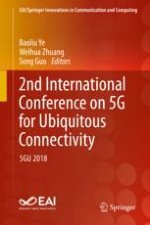The book presents the proceedings of the 2nd International Conference on 5G for Ubiquitous Connectivity (5GU 2018), which took place on December 4-5, 2018 in Nanjing, People’s Republic of China. The aim of this conference is to bring together researchers and developers as well as regulators and policy makers to present their latest views on 5G, including new networking, new wireless communications, resource control & management, future access techniques, new emerging applications, and latest findings in key research activities on 5G. The book is applicable to researchers, academics, students, and professionals.
Features practical, tested applications in 5G for ubiquitous connectivity;Includes discussion of 5G for ubiquitous connectivity in relation to wireless communications, resource control & management, and future access techniques;Applicable to researchers, academics, students, and professionals.
